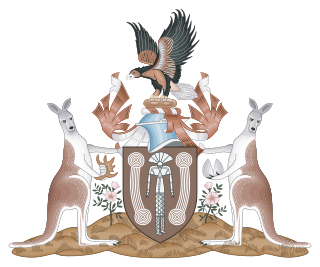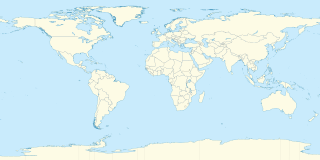
A Commonwealth realm is a sovereign state in which Queen Elizabeth II is the reigning constitutional monarch and head of state. Each realm functions as an independent co-equal kingdom from the other realms. As of 2019, there are 16 Commonwealth realms: Antigua and Barbuda, Australia, The Bahamas, Barbados, Belize, Canada, Grenada, Jamaica, New Zealand, Papua New Guinea, Saint Kitts and Nevis, Saint Lucia, Saint Vincent and the Grenadines, Solomon Islands, Tuvalu, and the United Kingdom. All 16 Commonwealth realms are members of the Commonwealth of Nations, an intergovernmental organisation of 53 member states. Elizabeth II is Head of the Commonwealth.
Legislative assembly is the name given in some countries to either a legislature, or to one of its branches.

The Parliaments of the Australian states and territories are legislative bodies within the federal framework of the Commonwealth of Australia.

The New South Wales Legislative Council, often referred to as the upper house, is one of the two chambers of the parliament of the Australian state of New South Wales. The other is the Legislative Assembly. Both sit at Parliament House in the state capital, Sydney. It is normal for legislation to be first deliberated on and passed by the Legislative Assembly before being considered by the Legislative Council, which acts in the main as a house of review.

The Legislative Assembly for the Australian Capital Territory is the unicameral legislature of the Australian Capital Territory (ACT). It sits in the Legislative Assembly Building on Civic Square, close to the centre of the city of Canberra.
The Commonwealth Parliamentary Association (CPA), previously known as the Empire Parliamentary Association, is an organisation which works to support good governance, democracy and human rights.

The Parliament of Tasmania is the bicameral legislature of the Australian state of Tasmania. It follows a Westminster-derived parliamentary system and consists of the Governor of Tasmania, the Tasmanian House of Assembly, and Tasmanian Legislative Council. Since 1841, both Houses have met in Parliament House, Hobart. The Parliament of Tasmania first met in 1856.

The Government of New South Wales, also referred to as the New South Wales Government, NSW Government or Her Majesty’s Government, is the Australian state democratic administrative authority of New South Wales. It is currently held by a coalition of the Liberal Party and the National Party. The Government of New South Wales, a parliamentary constitutional monarchy, was formed in 1856 as prescribed in its Constitution, as amended from time to time. Since the Federation of Australia in 1901, New South Wales has been a state of the Commonwealth of Australia, and the Constitution of Australia regulates its relationship with the Commonwealth. Under the Australian Constitution, New South Wales ceded legislative and judicial supremacy to the Commonwealth, but retained powers in all matters not in conflict with the Commonwealth.

The Government of Victoria is the executive administrative authority of the Australian state of Victoria.

The Government of Australia is the government of the Commonwealth of Australia, a federal parliamentary constitutional monarchy. It is also commonly referred to as the Australian Government, the Commonwealth Government, Her Majesty's Government, or the Federal Government.

The flag of the Commonwealth of Nations is the official flag used by and representing the Commonwealth of Nations. Its current design dates to 2013, a modification of a design adopted in 1976.
The law of Australia comprises many levels of codified and uncodified forms of law. These include the Australian Constitution, legislation enacted by the Federal Parliament and the parliaments of the States and territories of Australia, regulations promulgated by the Executive, and the common law of Australia arising from the decisions of judges.

The Government of the Northern Territory of Australia, also referred to as the Northern Territory Government, is the Australian territorial democratic administrative authority of the Northern Territory. The Government of Northern Territory was formed in 1978 with the granting of self-government to the Territory. The Northern Territory is a territory of the Commonwealth of Australia, and the Constitution of Australia and Commonwealth law regulates its relationship with the Commonwealth.
A Commonwealth citizen is a national or citizen of any member state of the Commonwealth of Nations. In some member countries, citizens from other Commonwealth territories are entitled to certain rights, including eligibility to vote in elections and serve in government positions. This status is most significant in the United Kingdom, and carries little or no privileges in many other Commonwealth countries.

Government in the Commonwealth of Australia is exercised on three levels: federal, states and territories, and local government.

The Constitution of Australia is the supreme law under which the government of the Commonwealth of Australia operates, including its relationship to the States of Australia. It consists of several documents. The most important is the Constitution of the Commonwealth of Australia, which is referred to as the "Constitution" in the remainder of this article. The Constitution was approved in a series of referendums held over 1898–1900 by the people of the Australian colonies, and the approved draft was enacted as a section of the Commonwealth of Australia Constitution Act 1900 (Imp), an Act of the Parliament of the United Kingdom.
The Dominions were the semi-independent polities under the British Crown that constituted the British Empire, beginning with Canadian Confederation in 1867. "Dominion status" was a constitutional term of art used to signify an independent Commonwealth realm; they included Canada, Australia, New Zealand, Newfoundland, South Africa, and the Irish Free State, and then from the late 1940s also India, Pakistan, and Ceylon. The Balfour Declaration of 1926 recognised the Dominions as "autonomous Communities within the British Empire", and the 1931 Statute of Westminster confirmed their full legislative independence.

Western Australia politics takes place in context of a constitutional monarchy with a bicameral parliamentary system, and like other Australian states, Western Australia is part of the federation known as the Commonwealth of Australia.










